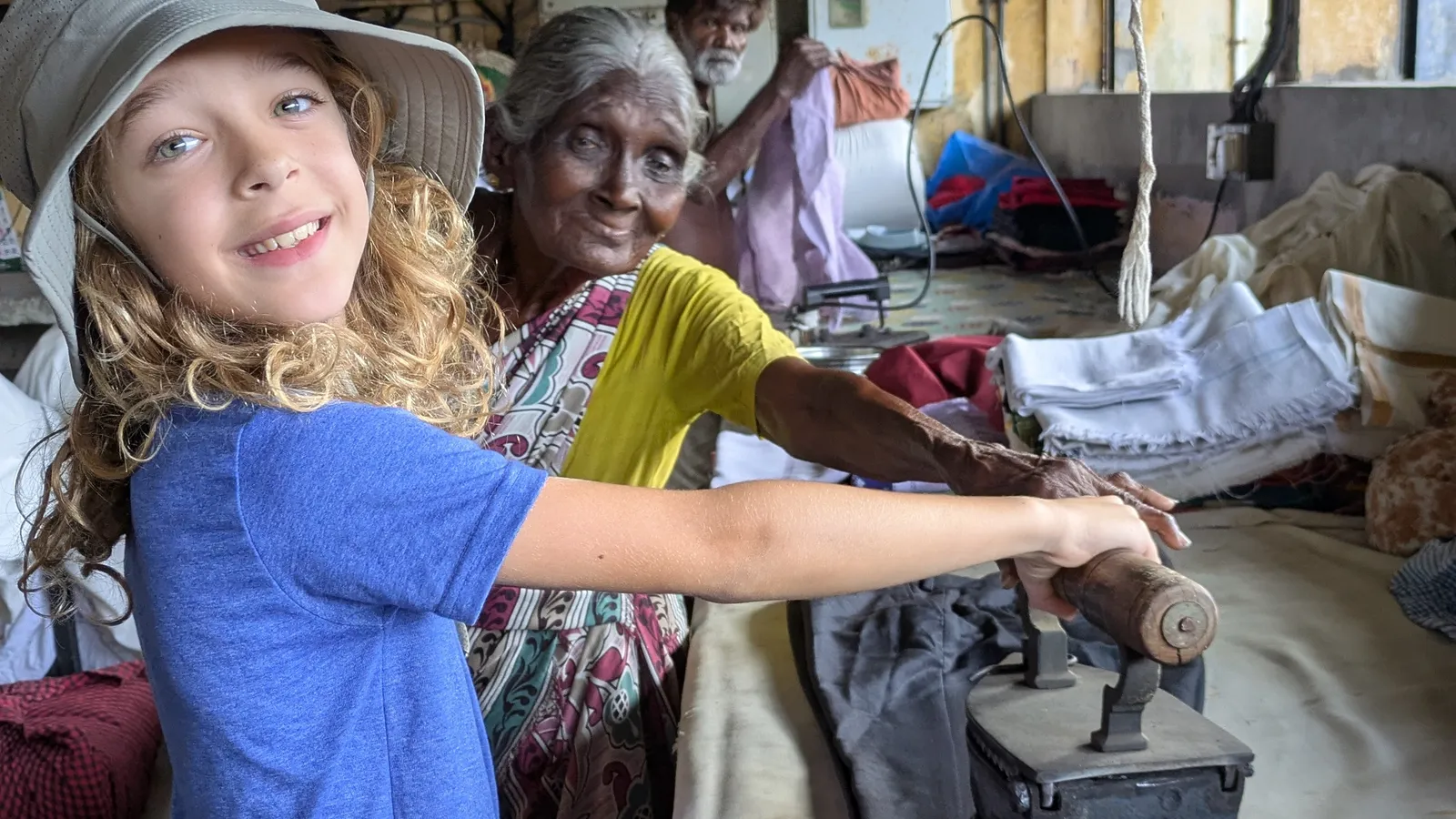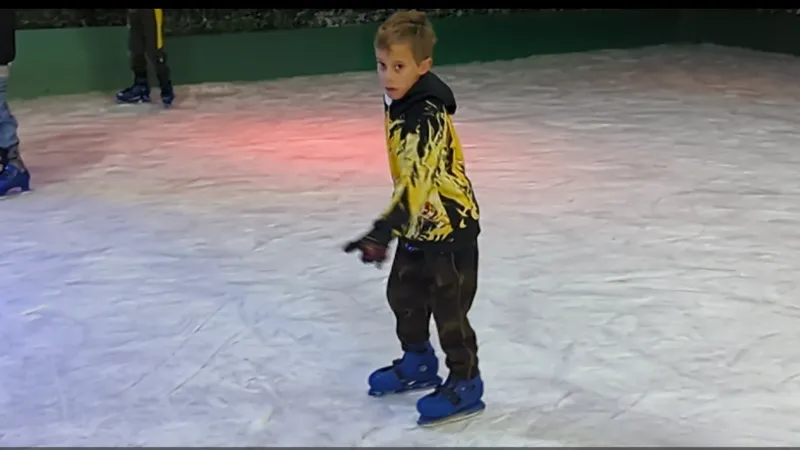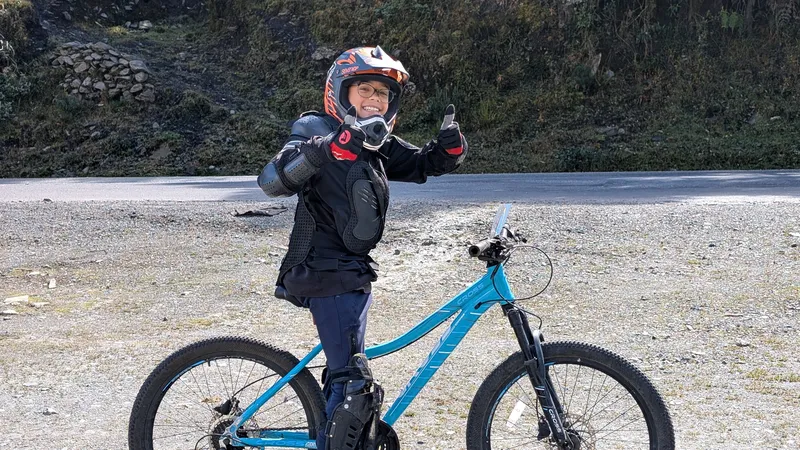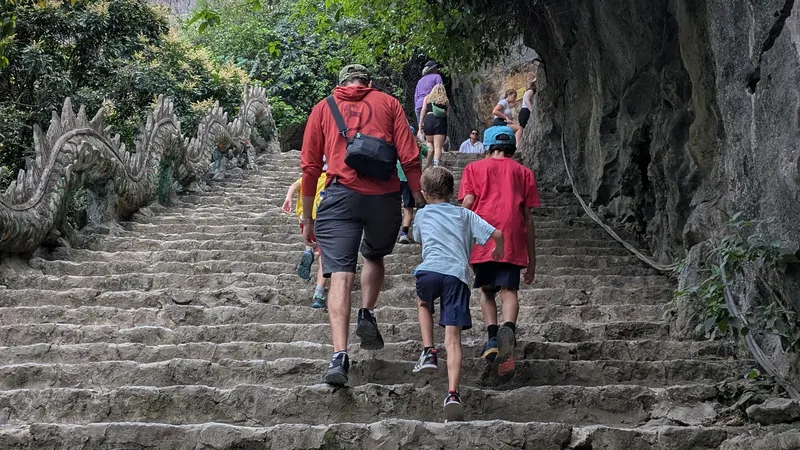The saga of Friday February 14, 2025 in Kochi, India
Our first day in Kochi, Chaim had to stay back to get work done before Shabbat started. The boys and I went to Mattancherry—a neighborhood of Kochi—to meet a tour guide who would take us around. Our first stop was the Dhobi Khana laundry community.
Back in the 16th century, the Portuguese conquered southern India, establishing Fort Kochi as one of their primary bases and trading posts. A little over a hundred years later, the Dutch overtook the Portuguese, taking control of Fort Kochi and the region. Soon after, the Dutch military hired families from the Tamil community—a neighboring state of Kerala in southern India—to wash and dry their uniforms, teaching them their methods. Although the Dutch were eventually kicked out by the British in the 19th century, families from the Tamil community continue providing traditional Dutch laundry services to this day. Most of the workers started as teenagers and are now somewhere between 40 and 90 years old. Each worker has a designated washing stall and a separate ironing area. Clothes are dried on a line using a clever rope-twisting method that holds clothing in place without clips. The clothing is then pressed with old-fashioned, coal-heated irons that are shockingly heavy. For generations, this work was passed down through families. Today, many of the younger generation have gone to school and are pursuing better-paying, more stable jobs. With the rise of automatic washers and dryers, it’s only a matter of time before the Dhobi Khana becomes a relic.
When we arrived, I had no idea what to expect. Truth be told, I didn’t even realize this was on the itinerary until we showed up. I had done exactly zero research. As we entered the compound, I felt like we were stepping back in time. Hand-pumped wells, soaked clothes being beaten by hand, heavy irons heating over coals. Most surprising was watching elderly men and women handle these physical tasks with ease and agility.
Our guide introduced us to a lovely woman, likely in her 80s—maybe 4’10” and weighing 90 pounds—who invited us to try ironing with a coal iron. Aside from worrying the boys would burn themselves, I couldn’t stop marveling at this woman’s strength. That iron was no joke. She’d been doing this same job since she was a young girl, day in and day out. Unbelievable.
After the laundry tour, we drove to a promenade where we were told we’d walk along the Arabian Sea. It was sweltering and oppressively humid. I bought popsicles from a street vendor, hoping to stave off the inevitable heat complaints. The boys wanted to touch the sea, which felt like bath water—my kind of temperature, but the water was filthy. Grime, soot, and trash floated along the edges. Even the boys hesitated. But one of them said, “When else would we get to touch the Arabian Sea?” and that was that. I had soap in my bag. It would be fine. Of course, just as they reached the water, the tide came in, catching them by surprise and soaking their shoes. Oops.
As we continued along the promenade, we watched fishermen cast massive Chinese fishing nets. Traditionally, these nets require six or seven people to operate, but now many use motors to reduce labor costs. Fishing season peaks in June and July during the monsoon. The rest of the year, they demonstrate for tourists, though the catches are small and mostly symbolic.
My popsicle strategy lasted maybe five minutes before the heat complaints returned—until we stumbled upon a playground. The boys were thrilled. It had been weeks since they’d played on a proper playground where they could just run wild. While they played, I noticed about twenty women and one man in uniforms sitting with brooms and trash bags. A few were already sweeping. The park was big, but twenty? I wondered if this was part of a government effort to keep people employed, efficiency aside.
Twenty minutes later, we continued on to Vasco De Gama Square. I actually knew we were going here, so I had given the boys a little history lesson that morning. Naturally, by the time we arrived, they’d forgotten most of it. Oh well. We reviewed the highlights and then made our way to St. Francis Church—the oldest church in Kochi. It was first established by the Portuguese as a Catholic church and then taken over by the Dutch and made Protestant.
The Dutch later established a second church nearby. We had to take our shoes off before entering because the floor tiles were Victorian and considered historic. The fans were sails on a pulley system—operable only by a sailor. It made the ceiling look like a ship’s deck. Brilliant, really.
Next, we drove to Jewtown. Yes, that is really what it’s called. And it’s located on Jew Street. Also true. The people of Kochi are deeply proud of their Jewish history.
In the 1500s, Kochi had a thriving Jewish community of about 1,000 people who were respected and protected by the king. So much so that when the Paradesi Synagogue was built in 1568, it was placed right up against the palace wall. Most of the Jewish community left Kochi in 1948 when Israel was established as a state. Queenie Hallegua—the last Jewess of Kochi, died in August 2024 at age 89. Her nephew is now the sole Jew left in the community.
Our guide explained that local tradition holds that Jews arrived in Kochi shortly after the destruction of the Second Temple, following trade routes established in the time of King Solomon. As far as I know, there’s no evidence of this beyond what’s written in the Tanakh, but it’s accepted as fact by many locals—including our guide, who was proud to share it. He also made a point of telling us that there is absolutely no antisemitism in the area.
The Paradesi Synagogue is beautiful. Chandeliers hang from the ceiling, each one adorned with rainbow-colored glass bulb holders. Golden painted stars decorate the space, though interestingly not the six-pointed Magen David. Like the churches, we had to remove our shoes before entering because the floor is made of hand-painted Chinese tiles. Three clocks hang on the walls—each showing a different time: “Malabar,” “Roman,” and “Jewish,” according to our guide.
Inside the sanctuary, a large Israeli tour group was finishing a lecture. Someone began to sing. We joined in for “Oseh Shalom” and “Am Yisrael Chai.” After weeks with almost no Jewish connection, I felt my heart swell. There’s something grounding about Jewish music echoing through ancient spaces and the beauty of connecting with strangers because of a common language through Jewish songs that pray for peace and celebrate the continuation of the Jewish people and the nation of Israel.
Afterward, we walked down Jew Street, which is full of small stores, many with the faint outlines of mezuzot still on their doorposts. We visited one that had belonged to Sarah Cohen who lived in Kochi and died at the age of 96 in 2019. The shop sells challah covers, napkins, and other hand-sewn pieces Queenie made. They reminded me of the embroidered items in my grandmother’s home. I couldn’t help but smile. Here we were, halfway across the world, and I felt entirely at home.
While we were out, Chaim texted to say he had come down with food poisoning. He couldn’t leave the bathroom for more than five minutes. When we got back to the hotel, he was feverish and miserable. I gave him some Pepto Bismol from our travel stash and made him drink sugar water. The boys did a bit of schoolwork and took a short screen break before Shabbat.
We returned to the Paradesi Synagogue for Friday night services. I was eager to daven in a 500-year-old shul alongside the last Jew of Kochi. Sadly, although the shul had been bustling earlier, there were fewer than fifteen people at services. Everyone else was Israeli, except for two mashgichim from Star-K who help ensure there’s kosher food available on Shabbat, generously provided by the Hallegua family. We were one man short for a minyan.
The boys grew restless and started to run around. I tried to keep them calm, worried they’d be scolded. But then an Israeli, who spends long stretches of time in Kochi, smiled and said, “It’s been a long time since these walls have heard children laughing. Let them play. It’s good for the soul—it brings life back to this place.” Immediately, I was transported to Naples, where our children were the first to bring life to a synagogue in decades. Once again, our boys—unwittingly—were helping breathe life into aging Jewish spaces around the world. For me, this was a powerful reminder that we really are links in a global Jewish chain.
After about an hour of waiting, we davened on our own. Then we were invited across the street to join the others for Friday night dinner. There, we met the last Jew of Kochi. His Hebrew name? Chaim. Though quiet at first, he lit up when a young woman told him her family came from Kochi. They were related. The recognition and joy that passed between them was deeply moving.
Back at the hotel, Chaim (mine) was still running a high fever. I gave him more sugar water and Tylenol, then moved all four boys into my room. I prayed the next day would go smoothly. My fuel tank was running low.
*I hesitated to participate in what felt like a performance for tourists. However, the wonderful woman who showed us her iron was eager for us to learn about her trade and wouldn't take no for an answer. I'm glad we did it!



